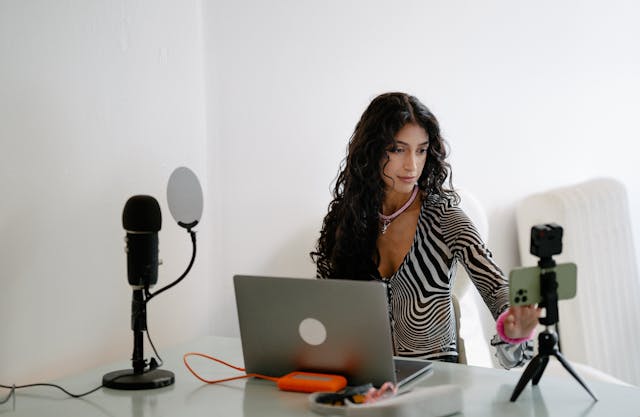When Can You Use Someone Else’s Work on Social Media: Understanding Fair Use
Understanding fair use on social media is very important because, in today’s digital world, sharing content has become second nature.
Whether it’s reposting a meme, using a clip from a song, or featuring a segment of a video, social media thrives on borrowed creativity.
But what does fair use actually mean?
When can you use content without legal trouble?
Without wasting time, let’s break it down in a simple, practical way.
What Is Fair Use?
Fair use is a legal doctrine that allows limited use of copyrighted material without needing permission from the copyright owner.
It is designed to promote freedom of expression by permitting the use of copyrighted content for certain purposes, such as commentary, criticism, news reporting, teaching, scholarship, and research.
However, fair use is not a free pass to take any content and post it. The law determines fair use based on four key factors.
From my experience managing a content-driven Instagram account, I learned that simply reposting funny videos, even with credit, doesn’t protect you legally.
I got hit with a takedown once, and that’s when I realized just how real this fair use stuff is.
The Four Factors of Fair Use
To understand if your use of copyrighted material is protected under fair use, courts consider these factors:
1. Purpose and Character of Use
The way you use the content matters. If you’re using it for educational, nonprofit, or transformative purposes (such as creating a parody or adding new meaning)…
It’s more likely to be considered fair use. Transformative use means you’re adding value or changing the original work in a significant way.
Example:
Fair Use: A YouTuber reviews a new movie and includes short clips to analyze its storytelling.
Not Fair Use: A TikTok user uploads the entire movie scene without any changes or commentary.
I once posted a mashup of two songs and added my own verse on top. That kind of remix added original flair and saved me from a copyright issue, though I still added a disclaimer to play it safe.
2. Nature of the Copyrighted Work
This factor considers whether the original work is factual or creative. Using factual or informational content is more likely to be fair use than using highly creative works, such as movies, music, and novels.
Example:
Fair Use: Quoting from a scientific study for an educational video.
Not Fair Use: Using a full scene from a movie in a personal vlog without permission.
I remember quoting a motivational line from a Netflix series in a tweet. Even though it was just one sentence, it still raised eyebrows because of how specific and recognizable it was. Since then, I paraphrase quotes and link to the original source.
3. Amount and Substantiality of the Portion Used
The more you use, the less likely it is to be fair use. Even a small portion of copyrighted content can be an issue if it’s the most important or recognizable part of the work.
Example:
Fair Use: Using a five-second clip from a song for a music critique.
Not Fair Use: Uploading a minute-long highlight of a hit song’s chorus.
I’ve learned this the hard way. One time I used just the intro of a Drake track for a dance video, and YouTube flagged it immediately.
That “hook” is what makes the song recognizable, so even a few seconds can cause issues.
4. Effect on the Market Value
If your use of the content negatively affects the market for the original work, it’s unlikely to be fair use. If people can access your version instead of purchasing or watching the original, that’s a red flag.
Example:
Fair Use: A film student analyzes a song’s lyrics in a school project.
Not Fair Use: A content creator posts a full movie online, making it unnecessary for people to buy or rent it.
Think of it this way, if someone can get the full experience from your post instead of paying for the real thing, you’re in dangerous territory.
I used to upload full song performances from festivals, but I took them down after a warning email from the label.
Understanding Fair Use: How to Safely Use Someone Else’s Work on Social Media
Even if you believe your use falls under fair use, it’s always best to be cautious. Here’s how you can legally and ethically share content on social media:
1. Ask for Permission: One of the simplest ways to avoid legal trouble is to get permission from the copyright owner. Many content creators are open to allowing reposts if you ask and give them proper credit.
I DMed a photographer once before using her image in a blog. Not only did she say yes, she reposted my post too. It built a cool connection and kept things legit.
2. Use Creative Commons or Royalty-Free Content: Platforms like Pixabay, Unsplash, and Pexels offer images and videos that can be used freely. Music platforms like Epidemic Sound and Artlist provide royalty-free tracks that won’t lead to copyright claims.
3. Give Proper Credit: Even if you believe your post qualifies as fair use, always credit the original creator. While giving credit doesn’t guarantee legal protection, it helps maintain ethical social media practices.
Tagging the original creator is just good karma. Sometimes it leads to a follow-back or collaboration.
4. Use Transformative Content: If you want to use copyrighted material, transform it significantly. Add commentary, create a remix, or use it in a way that changes its meaning. This makes it more likely to qualify as fair use.
5. Be Wary of Monetization: Using copyrighted material in monetized content increases your risk of legal trouble. Platforms like YouTube have strict copyright detection systems that can flag videos, remove them, or even result in lawsuits.
I uploaded a monetized vlog once with background music I thought was fine. The whole video got demonetized in minutes.
The lesson I learned was, royalty-free music is your best friend.
Common Fair Use Myths Debunked
Myth 1: “If I Give Credit, It’s Fair Use”
Reality: Giving credit does not make unauthorized use legal. Copyright laws still apply.
Myth 2: “If I Don’t Make Money, It’s Fair Use”
Reality: Nonprofit use is just one factor. Even free content can violate copyright if it affects the original work’s market value.
Myth 3: “If It’s Less Than 30 Seconds, It’s Fair Use”
Reality: No specific time limit determines fair use. Even a few seconds of copyrighted material can be flagged.
What Happens If You Violate Copyright Laws?
Copyright owners can report unauthorized use to platforms like YouTube, Instagram, and TikTok. If they find a violation, they may:
Issue a copyright strike, which can lead to account suspension.
Demand that the content be removed.
Take legal action, which may result in fines or lawsuits.
A friend of mine lost his monetized TikTok account because of three back-to-back copyright violations. Trust me, it’s not worth the risk.
To sum up, understanding fair use on social media is essential for any content creator or social media user. While it offers some flexibility, it is not a loophole for unlimited use of copyrighted material.
Always evaluate your content using the four fair use factors, and when in doubt, seek permission or use royalty-free alternatives.
By respecting copyright laws, you not only protect yourself from legal trouble but also support the original creators who put time and effort into their work.
READ ALSO
Infringement Of Copyright on Social Media
Social Media Marketing vs. Copyright Infringement: Finding Balance
Collaborative Artwork on Social Media: Best Practices for Sharing



